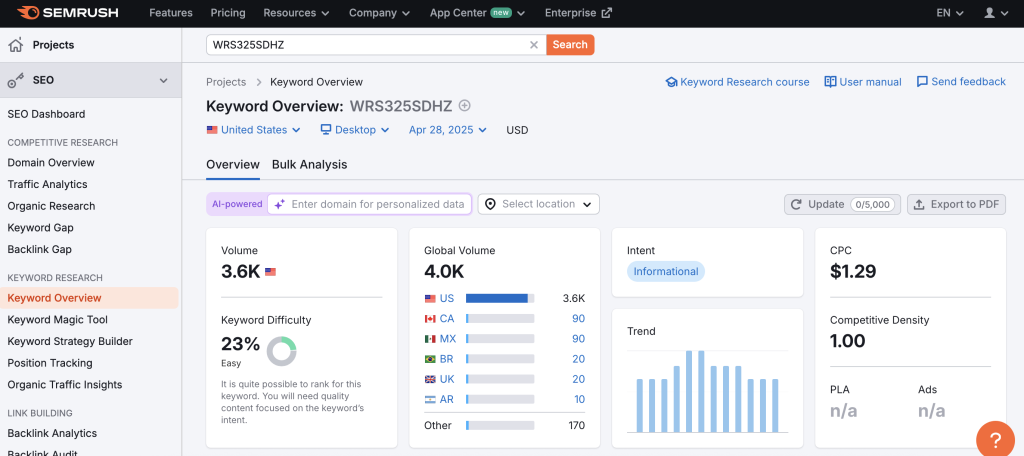If you’re running an ecommerce site and you’re not surfacing model numbers and UPCs clearly on your product pages, you’re missing an easy win for capturing high-intent traffic.
Many shoppers don’t browse around—they search directly for the exact product they want by model number or UPC. They might have already seen it in a store, compared it elsewhere, or need a direct replacement part. These are not casual shoppers. They are ready to buy.
But if your page doesn’t clearly mention that product’s model number or UPC?
You may not show up at all—or worse, your competitors will.
Where Things Go Wrong
A lot of ecommerce platforms have model numbers and UPCs hidden deep in backend fields, invisible to both shoppers and search engines. Google can’t rank what it can’t read easily.
If a shopper searches “Whirlpool WRS325SDHZ stainless steel refrigerator” and your page doesn’t mention “WRS325SDHZ” visibly in the content, title, or metadata, you’re almost invisible for that query.
And that’s a high-intent search you want to win with a solid search volume.

How to Fix It
Here’s how to make sure you show up when people search by UPC or model:
- Display model numbers and UPCs clearly on every product page, preferably near the top or in the product description
- Include model numbers in the page title tag and meta description where appropriate (without making titles unreadable)
- Use structured data (Product schema) to mark up model numbers
- Mention model numbers naturally in the product body text, not just in specs tables
Example:
Instead of just listing “High-efficiency refrigerator” in your product description, you could write:
“The Whirlpool WRS325SDHZ stainless steel refrigerator offers high-efficiency cooling with a sleek design, perfect for modern kitchens.”
Now you’re telling Google (and customers) exactly what product you have.
Why It Matters
- Model number searches are low-funnel buyers know what they want and are looking for the best place to purchase it
- Better structured product data makes your listings eligible for rich snippets in search results
- More complete product pages improve relevance and trust with both users and search engines
This is one of those SEO fixes that doesn’t require heavy lifting.
It’s about unlocking search visibility for high-intent queries that are already happening—you just need to meet shoppers where they are.
Bottom line:
Don’t hide your UPCs and model numbers. Put them front and center—and let them do some heavy lifting for your organic traffic.
Don’t worry about optimizing for SKUs
I often see companies also optimizing for SKU numbers, but this is a waste of time.
SKUs are not universal. Every company uses their own SKU system.
For example, the SKU for the Whirlpool product I mentioned above used by Lowe’s will be different than the SKU used by Home Depot for the same product.
SKUs are unique codes for each seller.



